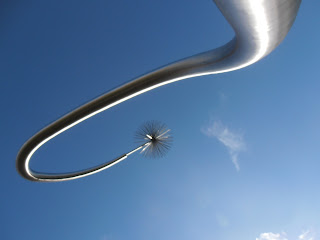I may have been away to warmer climes for just a few days
but I definitely “felt the cold” on my return
(I suspect the unscheduled return to winter weather with temperatures below freezing was responsible
but I want to believe that I’d adapted readily to living in a warmer climate). Anyway, it was so cold today, hot soup was on
the lunch menu. Using some rather tired
looking carrots and celeriac from the bottom of the fridge along with a few
onions and herbs, I made a pot of carrot and coriander soup and deliciously warming
it was too.
1 tbsp vegetable oil
1 onion, sliced
450g/1lb carrots, sliced
(optional: 1 root peeled and chopped celeriac)
1 tsp ground coriander
1.2 litresl/2 pints vegetable stock
large bunch fresh coriander, roughly chopped
salt and freshly ground black pepper
Method
1. Heat the oil in a large pan and add the onions and the carrots (and celeriac). Cook
for 3-4 minutes until starting to soften.
2. Stir in the ground coriander and season well. Cook for 1 minute.
3. Add the vegetable stock and bring to the boil. Simmer until the
vegetables are tender.
4. Whizz with a hand blender or in a blender until smooth. Reheat in a
clean pan, stir in the fresh coriander and serve.


































